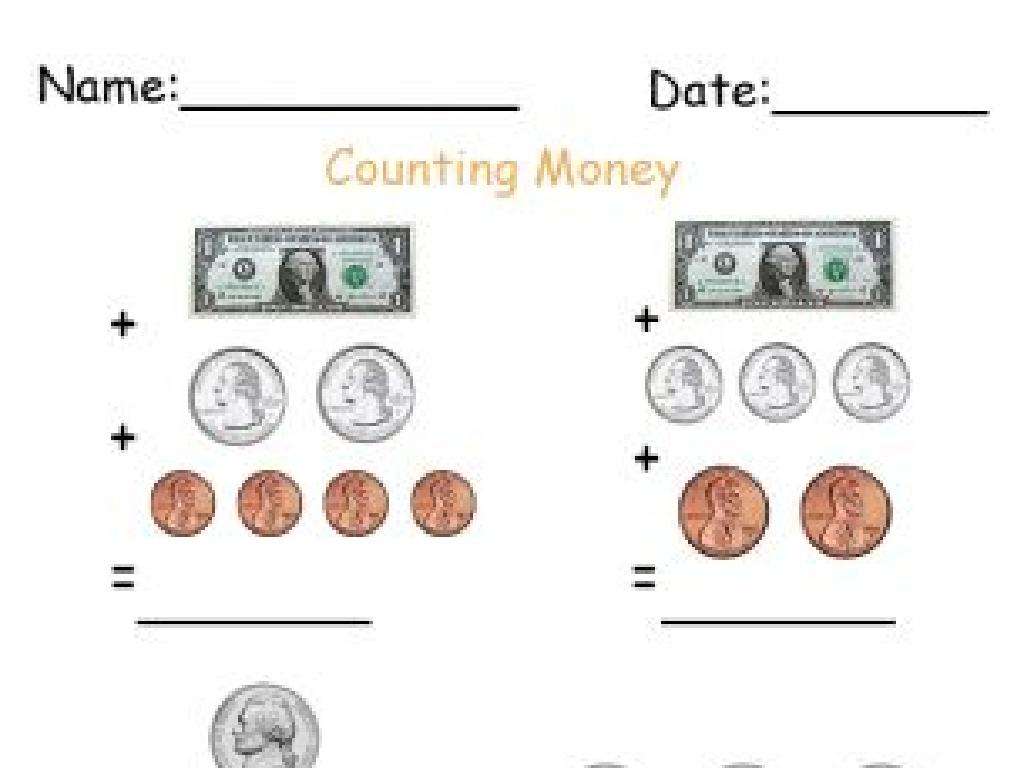Identify Direct Variation
Subject: Math
Grade: Eighth grade
Topic: Direct Variation
Please LOG IN to download the presentation. Access is available to registered users only.
View More Content
Welcome to Direct Variation!
– Define direct variation
– A relationship where as one amount increases, another amount increases at a constant rate.
– Direct variation in real life
– Examples: speed and distance, hours and pay.
– Identifying direct variation
– Look for y = kx in equations and straight lines through the origin in graphs.
– Today’s goal: Mastery
|
Direct variation is a fundamental concept in algebra that describes a linear relationship between two variables. When one variable changes, the other changes at a constant rate, which is represented by the slope in the equation y = kx. Real-world examples include the relationship between time and distance when traveling at a constant speed, or the relationship between hours worked and wages earned. Today’s goal for the students is to be able to identify direct variation both in algebraic equations and graphical representations. Ensure students understand that in graphs, direct variation is represented by a straight line passing through the origin. Encourage them to practice by creating their own examples and identifying the constant of variation, k.
Understanding Direct Variation
– Direct variation defined
– When two variables increase/decrease together
– Formula: y = kx
– ‘k’ is the constant multiplier of ‘x’
– ‘k’ as constant of variation
– ‘k’ also represents the slope in a graph
– Graphing direct variation
|
Direct variation is a fundamental concept in algebra that describes a linear relationship between two variables. When one variable changes, the other changes at a constant rate, which is the constant of variation ‘k’. This constant can be found by dividing y by x (k = y/x) when given a set of values. The formula y = kx is a simple equation that represents this relationship. It’s important for students to recognize that the graph of a direct variation is a straight line that passes through the origin (0,0) with ‘k’ being the slope of the line. Encourage students to practice by creating tables of values and graphing them to see the linear relationship visually. This understanding will be crucial as they progress in their study of algebra and encounter more complex functions.
Recognizing Direct Variation
– Direct variation and the origin
– All direct variation graphs cross the point (0,0)
– Positive ‘k’ indicates positive variation
– When ‘k’ > 0, as one variable increases, so does the other
– Negative ‘k’ indicates negative variation
– When ‘k’ < 0, one variable increases as the other decreases
– Graphical representation of 'k'
|
This slide aims to help students identify direct variation in algebraic functions. Emphasize that direct variation is a special type of linear relationship where the line always passes through the origin, which is the point (0,0). Explain that the constant of variation ‘k’ determines the nature of the relationship: if ‘k’ is positive, there is a positive direct variation, meaning both variables increase together. If ‘k’ is negative, there is a negative direct variation, meaning as one variable increases, the other decreases. Use graphs to visually demonstrate positive and negative direct variation, showing how the slope ‘k’ affects the direction of the line. Encourage students to practice by plotting different direct variation equations and identifying the constant ‘k’.
Examples of Direct Variation
– Speed relates to distance
– At constant speed, distance increases with time.
– Work correlates with time
– More workers, less time needed (same work rate).
– Constant ratios in variation
– Real-world direct variation
– E.g., Car speed (mph) and travel distance (miles).
|
This slide aims to illustrate the concept of direct variation with practical examples. Direct variation occurs when two variables are related in such a way that the ratio of their values remains constant. For instance, when traveling at a fixed speed, the distance covered is directly proportional to the time spent traveling. Similarly, when the number of workers increases, assuming they all work at the same rate, the time required to complete a task decreases. It’s crucial to emphasize that the concept of direct variation is a fundamental principle that can be applied to many real-life situations. Encourage students to think of other examples where one quantity increases or decreases in direct proportion to another. This understanding will help them grasp more complex mathematical concepts in the future.
Identifying Direct Variation in Equations
– Direct variation equation form
– Look for y = kx, where k is a constant
– Examples of direct variation
– For instance, y = 3x or y = -2x show direct variation
– Non-examples and why
– y = 2x + 1 is not direct because it has a y-intercept
– Graphical representation
– Direct variation lines always pass through the origin (0,0)
|
This slide aims to help students identify direct variation in algebraic equations. Direct variation occurs when the ratio of two variables is constant, represented by the equation y = kx, where k is the constant of variation. Students should note that direct variation implies a linear relationship where the graph passes through the origin, which is a key characteristic. Non-examples, like y = 2x + 1, are crucial to discuss because they highlight the importance of the y-intercept in determining direct variation. Encourage students to graph examples and non-examples to visually grasp the concept. This understanding is fundamental in solving problems involving proportional relationships.
Graphing Direct Variation
– Start at the origin (0,0)
– Use constant ‘k’ for another point
– ‘k’ is the rate of change or slope
– Plot the second point
– If ‘k’ is 3, from (0,0) go to (1,3)
– Draw line through the points
– Line should pass through origin
|
This slide introduces students to the process of graphing direct variation. Begin by plotting the origin, which is always a point on the graph of a direct variation. Next, use the constant of variation ‘k’ to determine the slope of the line, which represents the rate at which y changes with respect to x. Have students find a second point by applying the constant ‘k’ to an x-value of their choice. Once two points are plotted, instruct students to draw a straight line through these points, extending it across the graph. This line represents the direct variation and should always pass through the origin, illustrating that as x increases, y increases at a constant rate.
Class Activity: Identifying Direct Variation
– Determine equations showing direct variation
– Analyze graphs for direct variation
– Discuss findings with a partner
– Share insights and clarify doubts
– Class review of answers
– Reinforce learning through group discussion
|
This activity is designed to engage students in collaborative learning. Provide a set of equations and graphs for students to analyze. They should look for a constant ratio between variables in equations and a straight line passing through the origin in graphs, which are indicators of direct variation. Encourage students to work in pairs to foster peer learning. After the activity, lead a class discussion to review the answers, ensuring that students understand why each equation or graph does or does not represent direct variation. Offer examples like y = 3x (direct variation) vs. y = 3x + 2 (not direct variation). This will help solidify their understanding of the concept.
Direct Variation: Summary & Homework
– Recap: Direct variation basics
Direct variation occurs when two variables change at a constant rate.
– Homework: Worksheet completion
Complete the provided worksheet to practice identifying direct variation scenarios.
– Quiz preparation for next class
Review today’s material and practice problems to prepare for the quiz.
– Key concept reinforcement
|
As we conclude today’s lesson on direct variation, remind students of the core concept: when one variable increases or decreases, the other does so at a constant rate. For homework, students should complete the worksheet which includes various problems requiring them to identify direct variation from tables, graphs, and equations. Encourage them to use the y = kx formula, where ‘y’ represents the dependent variable, ‘x’ the independent variable, and ‘k’ the constant of variation. This exercise will help solidify their understanding and prepare them for the upcoming quiz. During the next class, we will assess their grasp of the concept through a short quiz, so they should review their notes and practice additional problems if necessary.





